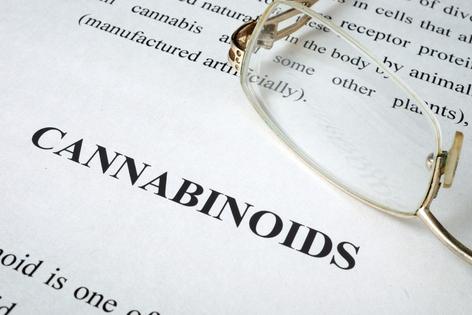Beyond CBD: Here come the other cannabinoids, but where’s the evidence?
Published in Health & Fitness
In the span of a few years, the component of cannabis called CBD (cannabidiol) went from being a relatively obscure molecule to a healthcare fad that has swept the world, spawning billions in sales, millions of users, CBD workout clothing, pillowcases, hamburgers, ice cream — you name it. The concerns of such a rapid adoption are that enthusiasm might be soaring high above the actual science, and that there are safety issues, such as drug interactions, that are given short shrift in the enthusiasm to treat chronic pain, insomnia, anxiety, and many of the other conditions that CBD is believed to help alleviate.
Cannabis, however, consists of about 600 different molecules, some 140 of which are called cannabinoids because they work on our body’s endocannabinoid system — a vast system of chemical messengers and receptors that help control many of our most critical bodily systems such as appetite, inflammation, temperature, emotional processing, memory, and learning. It was only a matter of time until new cannabinoids were discovered and commercialized.
What are some of these newer cannabinoids, and what is the evidence they may help us?
Unfortunately, much of the data for these newly discovered compounds comes from animal studies, so it is going to take some time — and high-quality research — to determine if the benefits that have been found in animals will apply to humans.
CBG
CBG, or cannabigerol, is a nonintoxicating cannabinoid that is being marketed for the alleviation of anxiety, pain, infection, inflammation, nausea, and even the treatment of cancer. It has a wide variety of potential medical uses, but virtually all of the studies that have been done on it have been done in animals, so it is difficult to fully extrapolate to humans. Experiments in mice have shown that it can decrease inflammation associated with inflammatory bowel disease, and that it can slow the growth of colorectal cancer. In cells, it inhibits glioblastoma multiforme cells (the type of brain cancer that Senator John McCain suffered from).
CBG has also been shown to act as an antimicrobial against many different agents, including the difficult-to-treat MRSA bug that causes so many hospital-acquired infections. Additionally, CBG is an appetite stimulant, and it may help treat bladder contractions. Currently, one main danger in its use lies in the lack of regulation and standardization that accompanies the entire supplement industry in this country, so it isn’t always guaranteed that you are getting what you think you are getting — and this is true for all of the substances discussed in this post.
THCV
THCV, or tetrahydrocannabivarin, is potentially exciting because it may support efforts to treat our obesity and diabetes epidemics. There is robust animal data that it lowers fasting insulin levels, facilitates weight loss, and improves glycemic control. In a 2016 study published in Diabetes Care, THCV was shown to significantly improve fasting glucose, pancreatic beta cell function (the cells that make insulin and that ultimately fail in diabetes), as well as several other hormones associated with diabetes. In both animals and humans, it has been well tolerated without significant side effects. In places like Israel, where the study of cannabinoids is far more advanced than the United States, strains with high levels of cannabinoids such as THCV (and low levels of THC) are being cultivated so that they can be studied.
CBN
...continued







Comments